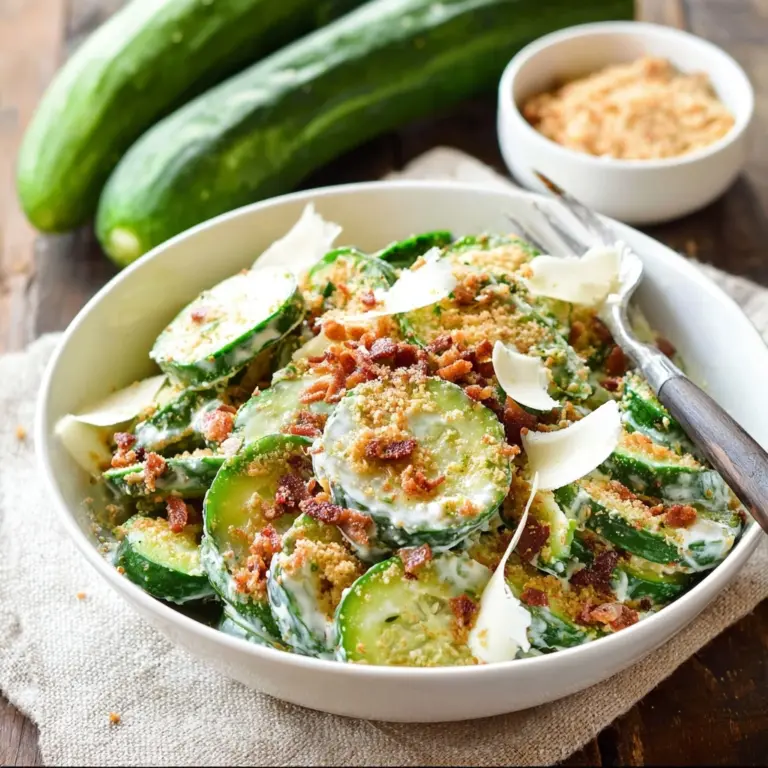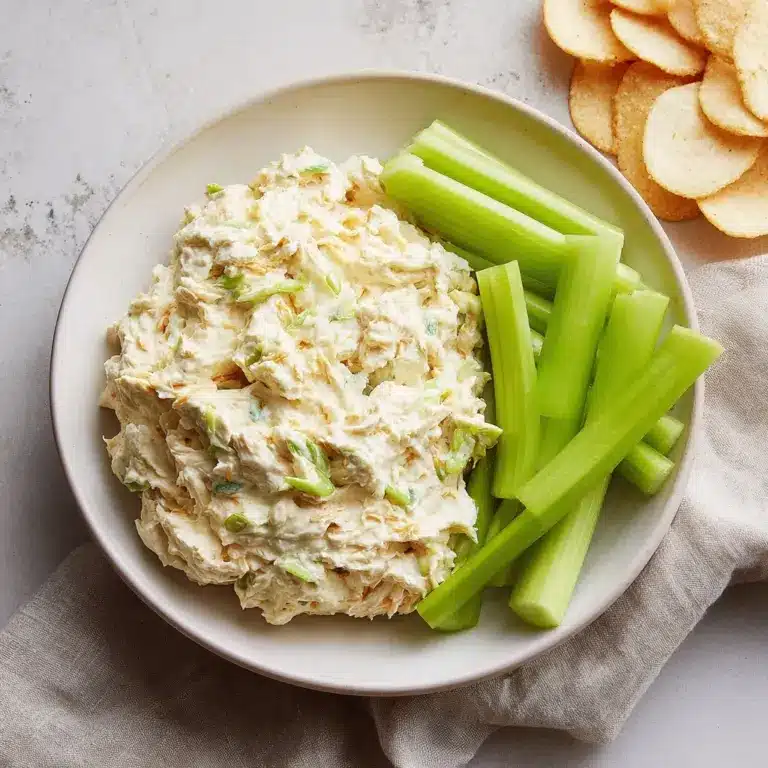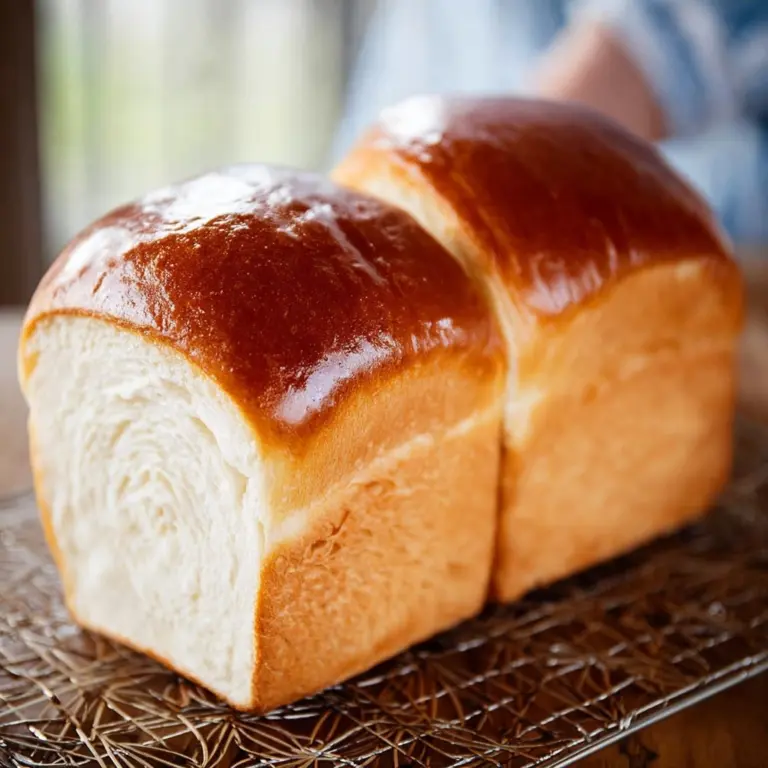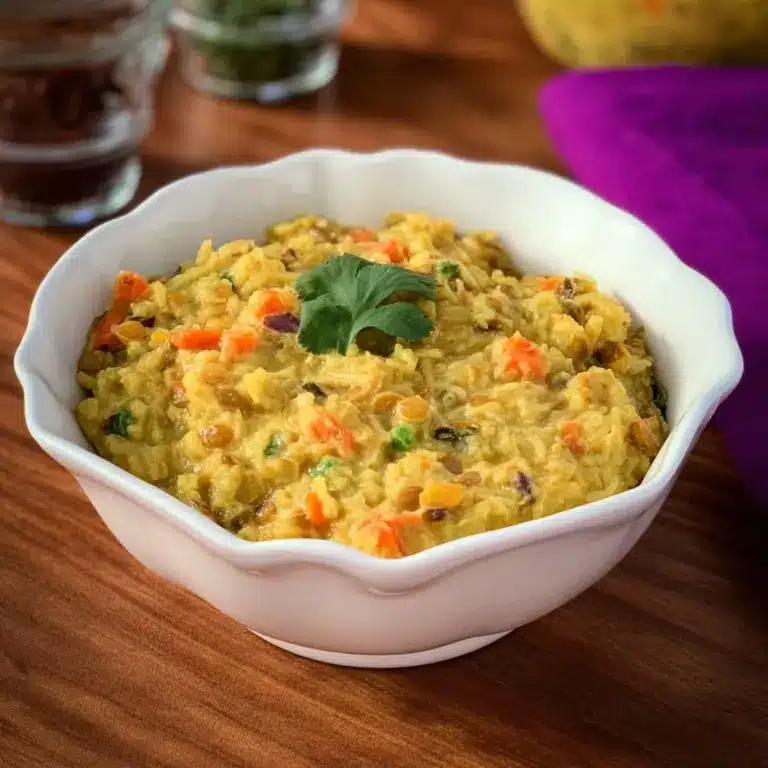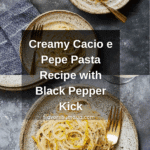How to Make Creamy Cacio e Pepe Recipe
If you have ever dreamed of creating a restaurant-quality pasta dish right in your own kitchen, then let me introduce you to the magic of How to Make Creamy Cacio e Pepe. This classic Roman recipe shines because of its simplicity, elevating just pasta, cheese, black pepper, and a few other ingredients into a luscious, creamy masterpiece. Every bite offers a perfect balance of peppery warmth and cheesy richness that feels like a comforting hug on a plate. I can’t wait to share this timeless dish with you so you can enjoy its silky texture and bold flavors any night of the week.
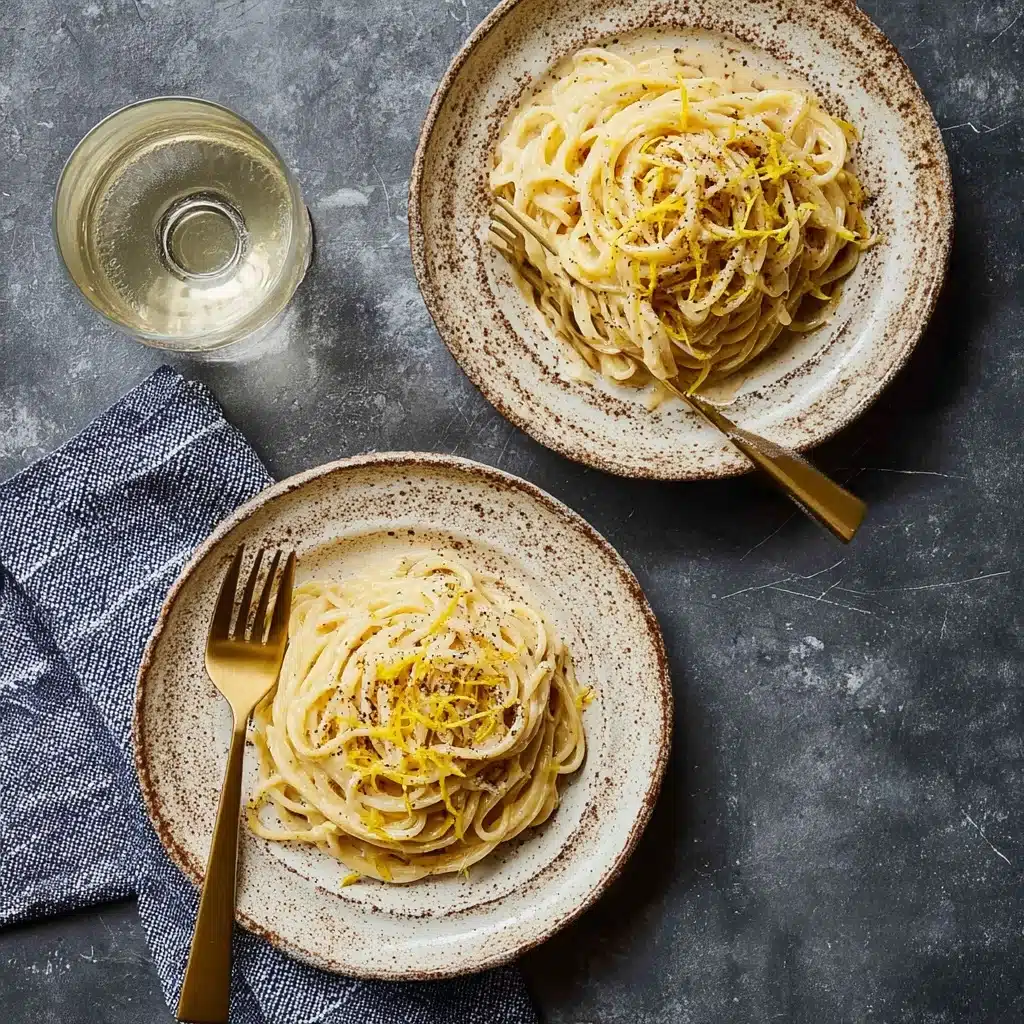
Ingredients You’ll Need
To master this recipe, you only need a handful of simple ingredients, but each one plays an essential role in delivering that luxurious texture and bold flavor that makes cacio e pepe unforgettable. Quality matters, especially when it comes to cheese and olive oil, because they bring out the true soul of the dish.
- 8 ounces bucatini or spaghetti: Choose your favorite long pasta; bucatini’s hollow center adds a fun twist, but classic spaghetti works perfectly.
- 2 teaspoons kosher salt: Essential for seasoning the pasta water and bringing out the flavors.
- 2 tablespoons extra virgin olive oil: Adds a fruity, aromatic base to the sauce.
- 2 tablespoons butter: Brings creaminess and richness to the sauce’s texture.
- 2 teaspoons fresh, coarsely ground black pepper: The star peppery flavor that gives this dish its name and signature punch.
- 3/4 cup finely grated Parmesan or Romano cheese (about 3 ounces): The cheese creates the silky, creamy sauce when combined with the pasta water.
- 1 tablespoon finely chopped parsley (optional): Adds a fresh, green pop of color and a hint of brightness at the end.
How to Make How to Make Creamy Cacio e Pepe
Step 1: Cook Pasta to Al Dente Perfection
Start by bringing 4 cups of salted water to a boil in a large pot or deep skillet with your pasta inside. Cooking the pasta for two minutes less than the package directs ensures it remains firm with a satisfying bite—this texture will hold up beautifully in the sauce and prevent mushiness.
Step 2: Prepare the Flavorful Pepper Butter Sauce
While your pasta is cooking, warm a large sauté pan over medium heat and add olive oil, butter, and freshly ground black pepper. Stir gently as the butter melts and the sharp pepper aroma fills your kitchen. This pepper-infused fat base is where all the flavor magic begins.
Step 3: Combine Pasta Water and Pepper Mixture
When your pasta is just 2 to 3 minutes from done, carefully pour half a cup of the starchy pasta water into the pepper butter mixture. The water will bubble, helping to emulsify the sauce. Add another half cup and give it a gentle stir or toss to combine everything smoothly.
Step 4: Toss Pasta Into the Lush Sauce
Using tongs, transfer the pasta straight from the water into the pan with your peppery sauce, reserving any remaining pasta water. Don’t drain the noodles completely—some water left clinging to them is essential for that signature creamy texture. Let the pasta cook with the sauce for another 1 to 2 minutes, stirring so every strand is glossy and coated. Add pasta water bit by bit if the sauce needs loosening.
Step 5: Finish With Cheese For Ultimate Creaminess
Remove your pan from the heat and sprinkle half of your finely grated cheese over the pasta. Toss quickly—but gently—to avoid stringy clumps. The reserved pasta water will help melt and loosen the cheese into a silky sauce that blankets the noodles. Add more cheese if desired for an even richer experience. Adjust seasoning with extra pepper if you like a bit more bite.
How to Serve How to Make Creamy Cacio e Pepe
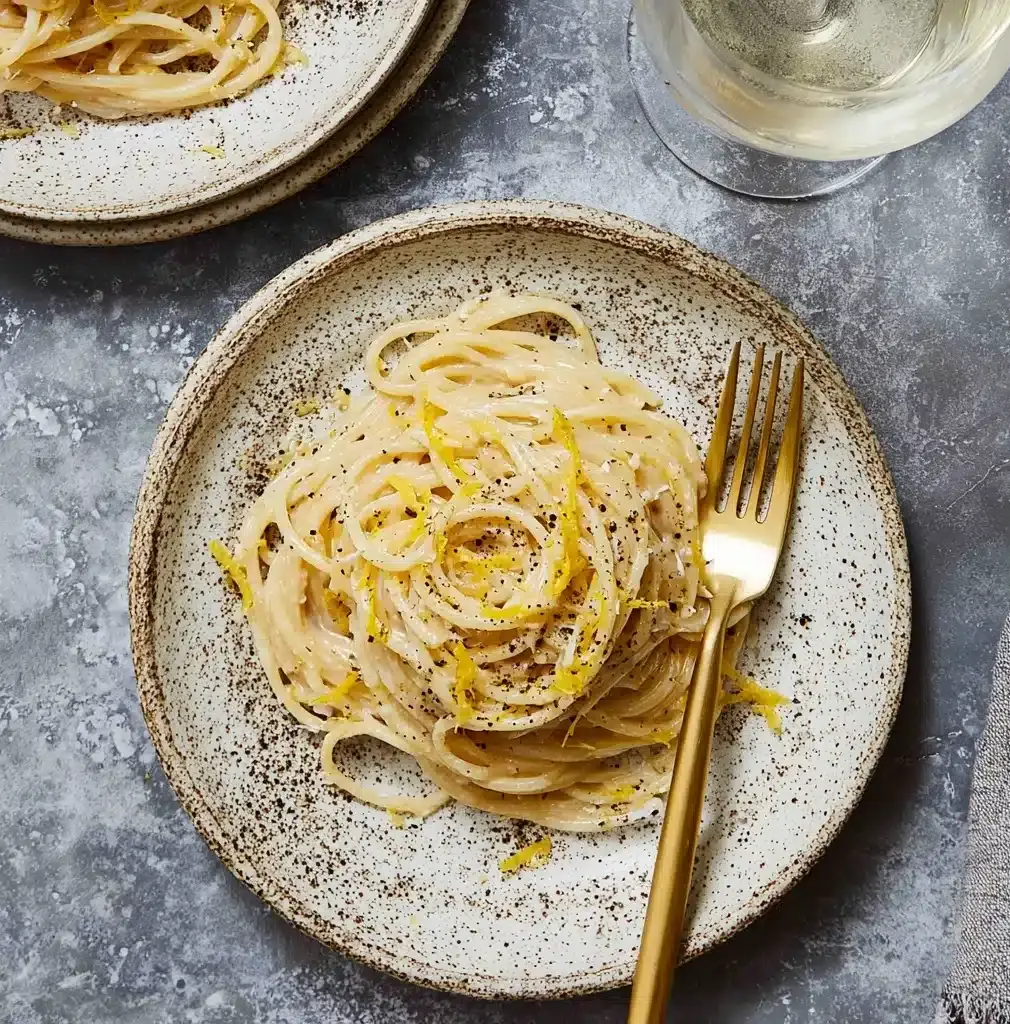
Garnishes
A sprinkle of finely chopped parsley adds a delicate touch of green that contrasts beautifully with the creamy pasta. It also offers a fresh flavor note that brightens the dish, making it even more inviting and homey.
Side Dishes
This dish stands beautifully on its own, but if you’re feeling adventurous, pair it with a crisp arugula salad dressed lightly with lemon vinaigrette or roasted vegetables. The peppery greens and crunchy textures complement the creamy pasta perfectly.
Creative Ways to Present
For a dinner party, serve your cacio e pepe nestled in warm shallow bowls with a small mound of extra cheese in the center and a few whole peppercorns scattered on top for a rustic yet elegant appeal. Or try twirling the pasta high on a fork to show off those glossy noodles—you’ll wow your guests and create a gorgeous plating moment.
Make Ahead and Storage
Storing Leftovers
If you have leftovers, store them in an airtight container in the refrigerator for up to two days. The pasta will thicken as it cools, so it’s best to refresh it before eating.
Freezing
While freezing is possible, it isn’t ideal for creamy pasta dishes like this since the sauce can separate. If you plan ahead, it’s better to freeze just the cooked pasta without sauce and prepare the sauce fresh when you’re ready to eat.
Reheating
To reheat, warm gently in a skillet over low heat, adding a splash of water or olive oil to loosen the sauce and bring back that velvety consistency. Avoid microwaving directly, as it can cause cheese to become rubbery.
FAQs
Can I use different types of cheese?
Absolutely! Parmesan and Pecorino Romano are traditional, but feel free to experiment with Asiago or grana padano for slightly different flavor profiles. Just make sure to use finely grated cheese to help it melt smoothly.
What kind of pasta works best for this recipe?
Bucatini and spaghetti are classic choices because their long strands wrap beautifully in the sauce. However, you can also try tonnarelli or even linguine for a similar effect; just avoid shapes that won’t hold the sauce well.
How fresh does the black pepper need to be?
Freshly cracked black pepper makes a huge difference. It releases essential oils and bright, bold flavors that pre-ground pepper lacks. For authentic cacio e pepe, always grind just before cooking.
Is this dish suitable for vegetarians?
Yes! As long as you choose vegetarian-friendly cheese—some cheeses use animal rennet—you can enjoy this creamy pasta with confidence. Always check labels if you follow a strict vegetarian diet.
Can I add cream or milk to make it creamier?
The traditional recipe doesn’t use cream; the creamy texture comes from the pasta water and cheese emulsion. Adding cream changes the character but is totally fine if you prefer a richer sauce. Just know you’re stepping away from the classic simplicity of cacio e pepe.
Final Thoughts
Now that you know How to Make Creamy Cacio e Pepe, you hold the secret to one of Italy’s most beloved and effortlessly elegant dishes. It’s perfect for those nights when you crave comfort without fuss. I urge you to gather your ingredients and try this recipe soon—you’ll discover just how satisfying and joyful making pasta from scratch can be. Buon appetito!
PrintHow to Make Creamy Cacio e Pepe Recipe
This Creamy Cacio e Pepe recipe elevates the classic Roman pasta dish by combining perfectly cooked bucatini or spaghetti with a rich, creamy sauce made from butter, olive oil, freshly ground black pepper, and finely grated Parmesan cheese. The addition of reserved pasta water creates a luscious, silky texture that coats each noodle beautifully, producing a simple yet indulgent meal that’s ready in under 30 minutes.
- Prep Time: 5 minutes
- Cook Time: 15 minutes
- Total Time: 20 minutes
- Yield: 4 servings 1x
- Category: Main Course
- Method: Boiling, Sautéing
- Cuisine: Italian
- Diet: Vegetarian
Ingredients
Pasta
- 8 ounces bucatini or spaghetti
- 2 teaspoons kosher salt
Sauce
- 2 tablespoons extra virgin olive oil
- 2 tablespoons butter
- 2 teaspoons fresh, coarsely ground black pepper
- 3/4 cup finely grated Parmesan cheese or Romano cheese (about 3 ounces)
Garnish (optional)
- 1 tablespoon finely chopped parsley
Instructions
- Cook the Pasta: Add 4 cups of water to a large pot or high-sided skillet along with the kosher salt and bring to a boil. Add the bucatini or spaghetti and cook for two minutes less than the package instructions recommend, ensuring the noodles remain firm with a slight snap and chewy texture.
- Prepare the Sauce Base: While the pasta cooks, heat a large sauté pan over medium heat. Add the olive oil, butter, and freshly ground black pepper. Stir gently until the butter melts and the pepper becomes fragrant, creating a warm, aromatic base.
- Add Pasta Water to Sauce: When the pasta is 2-3 minutes from being done, carefully add 1/2 cup of reserved pasta water to the olive oil and pepper mixture. The liquid will bubble and splatter—stir gently. Add another 1/2 cup of pasta water and toss the pan to combine and create the sauce.
- Combine Pasta with Sauce: Use tongs to transfer the pasta directly into the sauce pan without fully draining the cooking water. This extra moisture will enhance the creaminess. Continue cooking the pasta in the sauce for 1-2 minutes until al dente, tossing to coat each strand. Add more pasta water if necessary to keep the sauce silky and to the desired consistency.
- Add Cheese and Finish the Sauce: Remove the pan from heat and sprinkle half of the grated cheese over the pasta. Quickly toss the pasta and cheese gently—avoid vigorous stirring to prevent the cheese from clumping or becoming stringy. Add reserved pasta water as needed to loosen the sauce and create a lush, creamy texture. Add the remaining cheese if desired for extra cheesiness.
- Season and Serve: Taste the pasta and add more freshly ground black pepper if preferred. Sprinkle with chopped parsley for a vibrant touch, if using. Serve immediately while hot and creamy.
Notes
- Use freshly grated Parmesan or Romano for best flavor and texture; pre-grated cheese may not melt as smoothly.
- Adjust the amount of black pepper according to your taste preference—traditional Cacio e Pepe is pepper-forward.
- Reserve extra pasta water as needed to adjust the sauce consistency; this starchy water is key to a creamy finish.
- Avoid over-stirring once cheese is added to prevent clumping or stringiness.
- This dish is best enjoyed fresh as the sauce can thicken and lose creaminess upon standing.
Nutrition
- Serving Size: 1 cup cooked pasta with sauce
- Calories: 410
- Sugar: 1.2g
- Sodium: 420mg
- Fat: 18g
- Saturated Fat: 8g
- Unsaturated Fat: 8g
- Trans Fat: 0g
- Carbohydrates: 48g
- Fiber: 2.5g
- Protein: 15g
- Cholesterol: 35mg
Keywords: Cacio e Pepe, pasta recipe, creamy pasta, Italian cuisine, bucatini recipe, easy dinner, black pepper pasta, Parmesan pasta



